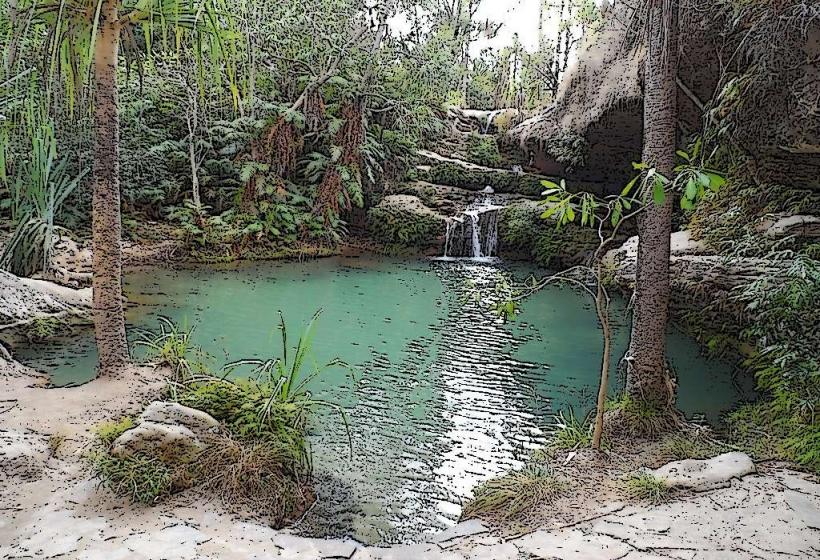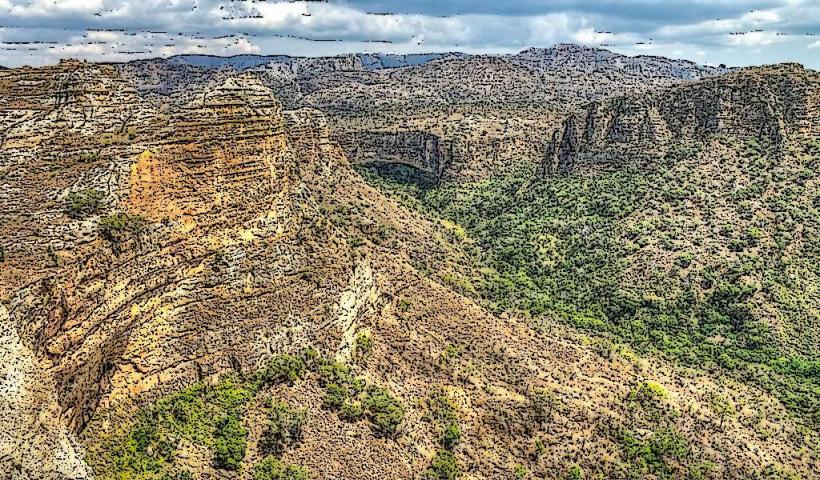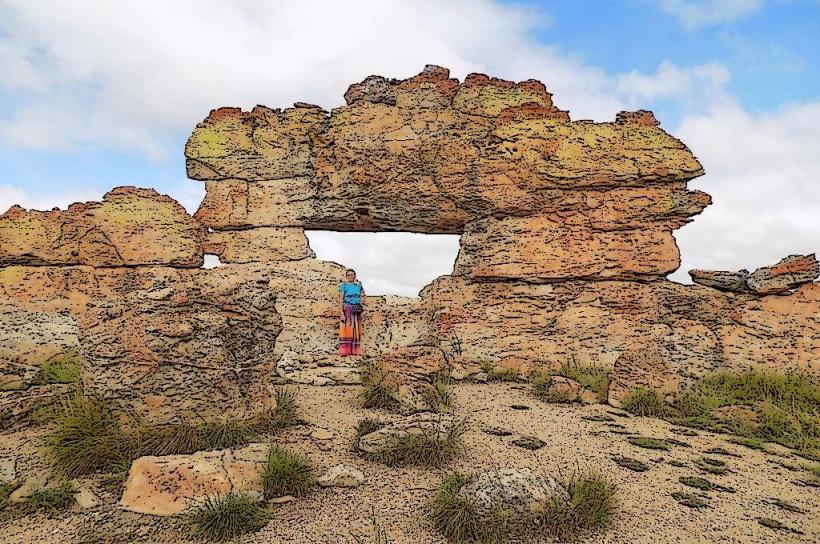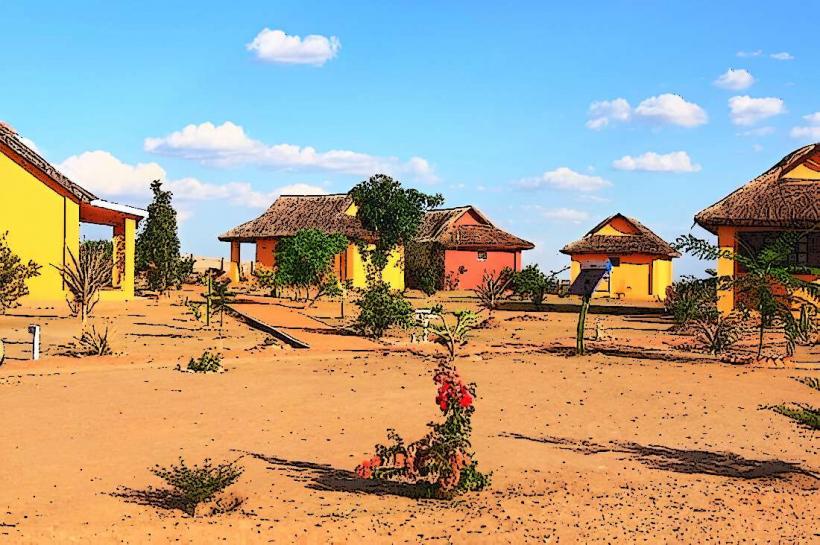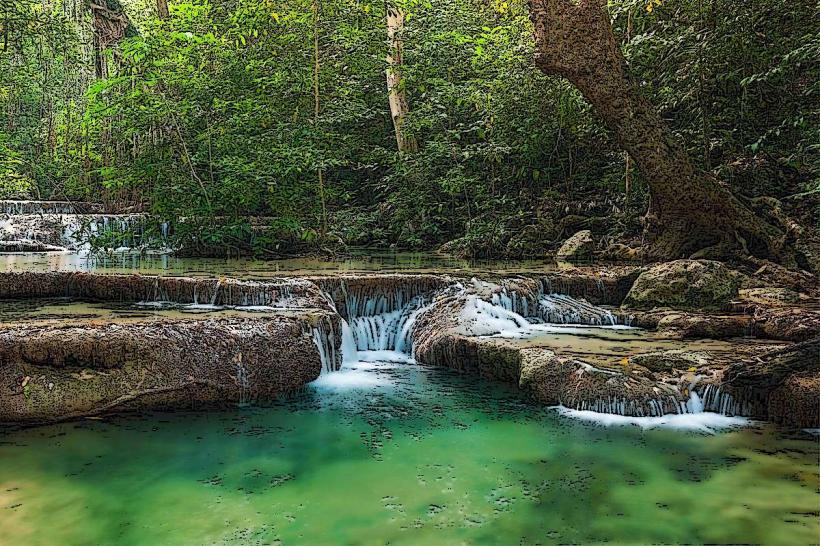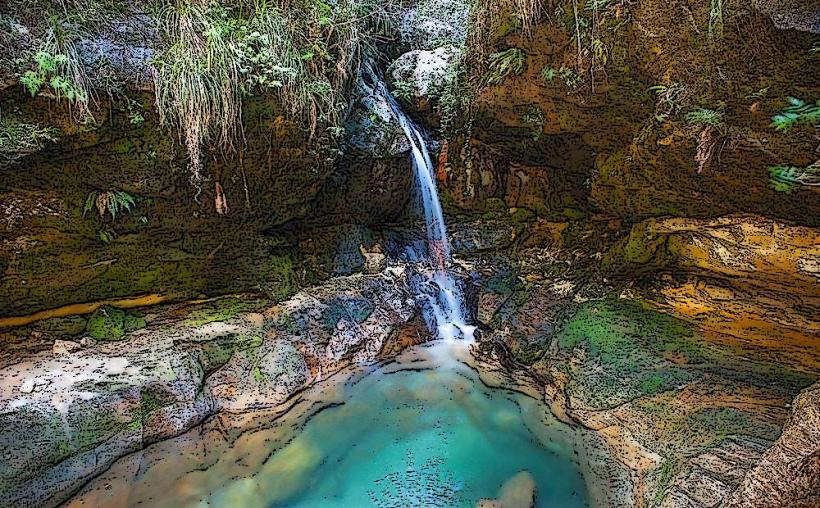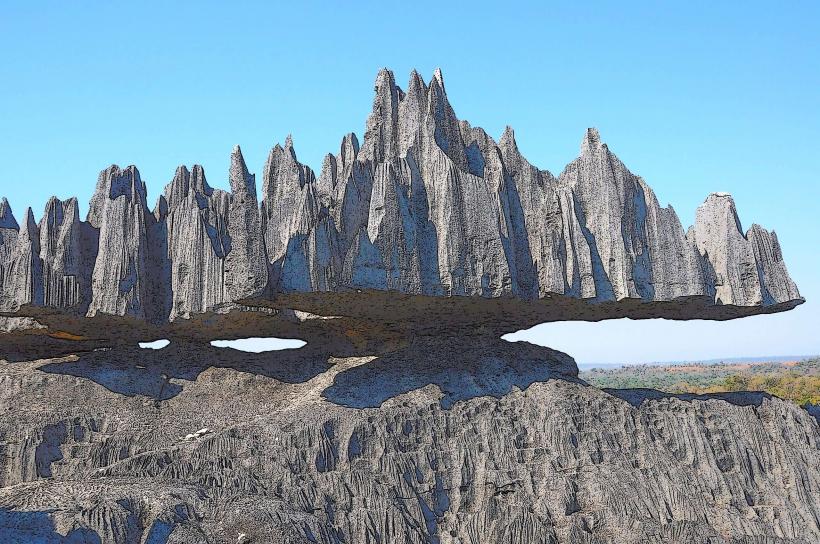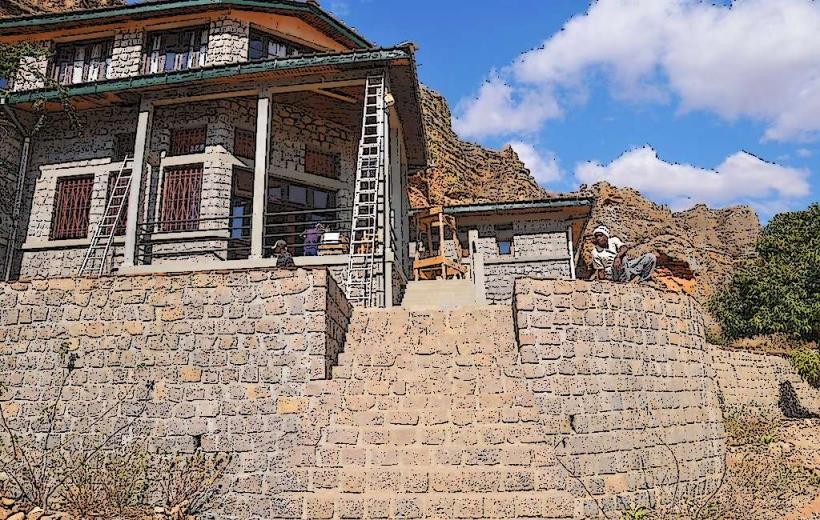Information
Landmark: Isalo National ParkCity: Isalo
Country: Madagascar
Continent: Africa
Isalo National Park is located in the central-southern region of Madagascar, renowned for its unique and striking landscapes, which include sandstone formations, canyons, grasslands, and natural pools. It covers an area of approximately 815 square kilometers (315 square miles) and was established as a national park in 1962. The park is part of the Madagascar Biodiversity Hotspot and is known for its rich biodiversity, including endemic flora and fauna. Here are key aspects of the park:
1. Geography and Landscape:
- Sandstone Formations: Isalo's most notable feature is its dramatic sandstone formations, which have been shaped over millions of years by erosion. These formations create a surreal and otherworldly landscape, including deep canyons, towering peaks, and flat-topped plateaus.
- Canyons and Gorges: The park contains several canyons, such as the Namaza and the Canyon des Rats, which are popular for trekking and exploration. These canyons are often shaded, cool, and home to unique ecosystems.
- Natural Pools and Waterfalls: The park is home to several natural pools and waterfalls, such as the Piscine Naturelle (Natural Pool), a serene oasis ideal for swimming, especially after a trek.
- Grasslands and Savannas: The interior of the park consists largely of dry, open savanna and grasslands, which transition to forested areas along watercourses.
2. Flora and Fauna:
- Endemic Species: Isalo National Park is home to a variety of endemic species, especially plants and animals adapted to the dry, rocky environment. Its plant life includes species like the Isalo lily (a rare and endemic flower), and various types of aloe, succulent plants, and spiny forests.
- Wildlife: The park is known for its diverse wildlife, including several species of lemurs, such as the ring-tailed lemur (Lemur catta), red-fronted brown lemur (Eulemur rufifrons), and the sifaka lemur species. Additionally, the park is home to numerous bird species, including the Madagascar kestrel and Madagascar partridge.
- Reptiles and Amphibians: The park also hosts various reptiles, such as Madagascar's boa and chameleons, and amphibians like frogs native to the region.
3. Human Influence and History:
- Fossils and Archaeological Sites: The park is historically significant as it contains ancient burial sites of the Bara people, one of the ethnic groups indigenous to southern Madagascar. These sites include rock tombs and cave paintings that offer insight into the ancient cultures that once inhabited the region.
- Local Communities: The surrounding area is inhabited by the Bara people, who traditionally rely on livestock herding and agriculture. They have long used the park's resources and are involved in conservation efforts to protect the park's natural beauty.
4. Tourism and Activities:
- Trekking and Hiking: Isalo is a popular destination for trekkers due to its varied landscapes, from scenic walks through canyons to climbs up the park's rugged peaks. Popular treks include routes to the Canyon des Singes (Monkey Canyon), Piscine Naturelle, and the Window of Isalo.
- Wildlife Watching: Due to its rich biodiversity, wildlife watching is a major activity. Visitors often go in search of lemurs, birds, and reptiles.
- Camping and Lodging: The park offers several campsites, though there are also hotels and lodges in nearby towns like Ranohira, the gateway town to the park.
- Cultural Tours: Local guides offer tours that not only focus on the natural beauty of the park but also the cultural and historical significance of the site.
5. Conservation Efforts:
- As part of Madagascar's broader conservation efforts, Isalo National Park is actively protected, with ongoing initiatives to preserve its unique environment and species. The park is managed by Madagascar National Parks (MNP), and local communities play a key role in both conservation and tourism activities.
6. Best Time to Visit:
- Climate: Isalo has a tropical climate with distinct wet and dry seasons. The best time to visit is during the dry season from April to October, when the weather is cooler and ideal for trekking and outdoor activities. The wet season, from November to March, can make the terrain slippery and difficult for hiking.
7. Accessibility:
- Isalo National Park is accessible from the town of Ranohira, located about 700 kilometers south of Antananarivo, Madagascar’s capital. Visitors can reach Ranohira by road, and from there, guided tours are available to explore the park.
Isalo National Park offers a spectacular combination of geology, wildlife, and local culture, making it one of Madagascar's most popular and distinctive natural attractions. Its otherworldly landscapes and the opportunity to witness endemic wildlife in their natural habitat provide a memorable experience for nature lovers and adventurers alike.

